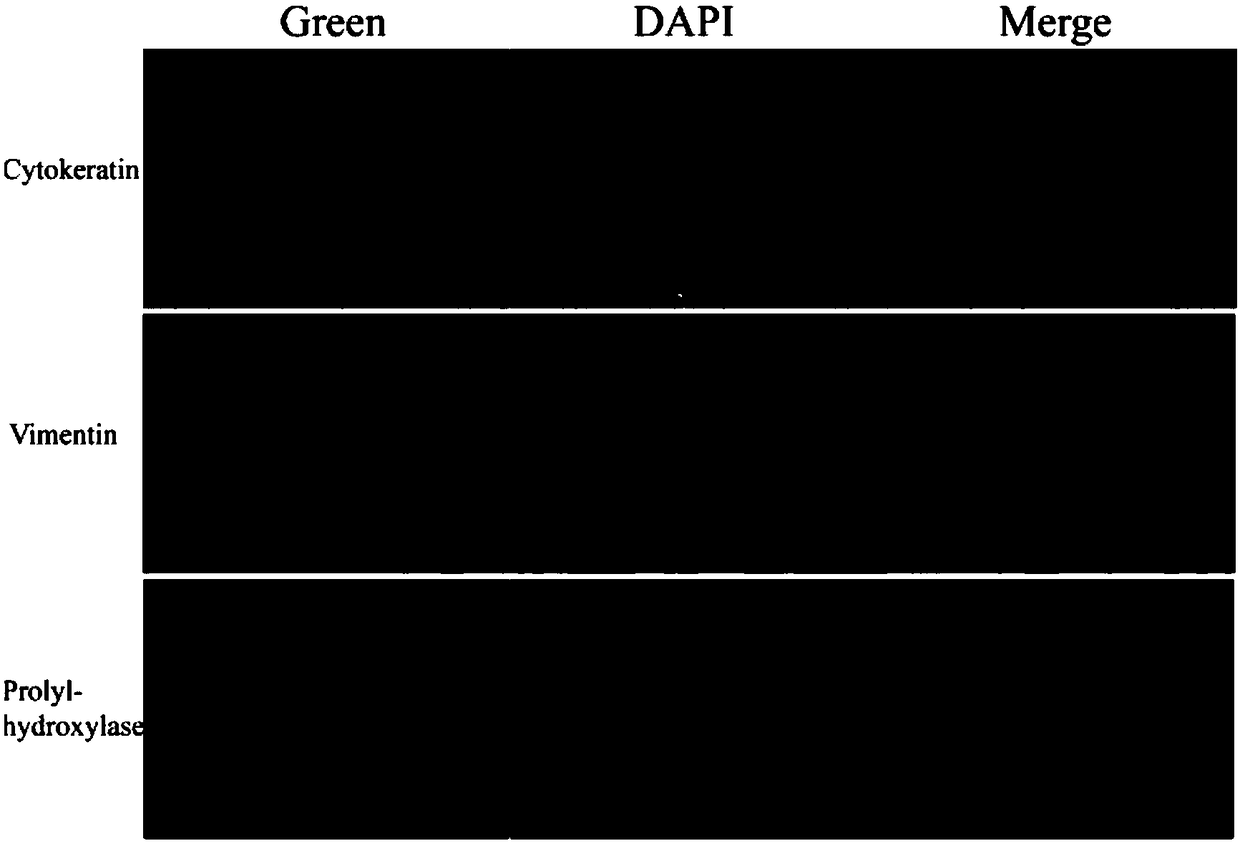Method for constructing 3D model in vitro of colon cancer cell peritoneal metastasis
A technology for colon cancer cells and three-dimensional models is applied in the field of constructing in vitro three-dimensional models of colon cancer cell peritoneal metastasis.
- Summary
- Abstract
- Description
- Claims
- Application Information
AI Technical Summary
Problems solved by technology
Method used
Image
Examples
Embodiment approach
[0060] The present invention provides an embodiment of constructing a three-dimensional metastasis model in vitro, which specifically includes:
[0061] Preparation of three-dimensional collagen containing fibroblasts (take the preparation of 1ml, 1mg / ml three-dimensional glue as an example): prepare fibroblasts suspended in culture medium, place them in an ice bath, and mix 200ul rat tail collagen type I Add (5mg / ml) to 12ul 0.1mol / L NaOH (if 12ul 0.1mol / L NaOH is added to the collagen solution in turn, local collagen coagulation will occur due to the inability of NaOH to mix quickly), mix immediately, Then add 23ul 10×PBS or 10× culture solution and mix well (the pH after mixing is about 7, if no phenol red is added to PBS or culture solution, you need to use pH test paper to test it for the first time);
[0062] Add 760ul of fibroblast suspension, mix well and add to the culture vessel immediately. Place the culture vessel at room temperature for 20 minutes, solidify after...
Embodiment 1
[0063] Embodiment 1.MTT experiment
[0064] The MIT experiment is to detect the drug sensitivity of fluorescently labeled HCT116 cells in a 3D culture system relative to a 2D culture system.
[0065] In a 96-well culture plate: 200 fibroblasts mixed with rat tail collagen type I in a culture medium (RPMI1640, containing 20% FBS, 100 U / ml penicillin and 100 ug / ml streptomycin). After the gel was solidified, 10,000 primary mesothelial cells were added to the culture system and incubated at 37°C until the mesothelial cells formed a confluent layer (18-38 hours). HCT116-GFP cell suspension was seeded in each well. After the cells were completely adhered to the wall, the anticancer drug 5-FU was administered. After 24 hours of administration, it was obtained through a fluorescence microscope at 100 times, the number of surviving cells was quantified, and the cell survival rate was calculated. The experiment was repeated three times.
[0066] like Image 6 As shown, compared wi...
Embodiment 2
[0067] Example 2. Adhesion experiment
[0068] Adhesion assay was used to detect the ability of fluorescently labeled HCT116 cells to adhere to mesothelial cells and / or fibroblast-wrapped type I collagen fusion layer.
[0069] In a 96-well culture plate: 200 fibroblasts mixed with rat tail collagen type I in a culture medium (RPMI1640, containing 20% FBS, 100 U / ml penicillin and 100 ug / ml streptomycin). After the gel was solidified, 10,000 primary mesothelial cells were added to the culture system and incubated at 37°C until the mesothelial cells formed a confluent layer (18-38 hours). HCT116-GFP cell suspension was seeded in each well. Adherent cells were acquired by a fluorescence microscope at 100 times, and the number of adhered cells was quantified. Experiments were repeated three times.
[0070] like Figure 7 As shown, compared with the 2D culture system, the colon cancer cells under the 3D model system of the present invention in Example 2 exhibited a stronger en...
PUM
 Login to View More
Login to View More Abstract
Description
Claims
Application Information
 Login to View More
Login to View More - R&D
- Intellectual Property
- Life Sciences
- Materials
- Tech Scout
- Unparalleled Data Quality
- Higher Quality Content
- 60% Fewer Hallucinations
Browse by: Latest US Patents, China's latest patents, Technical Efficacy Thesaurus, Application Domain, Technology Topic, Popular Technical Reports.
© 2025 PatSnap. All rights reserved.Legal|Privacy policy|Modern Slavery Act Transparency Statement|Sitemap|About US| Contact US: help@patsnap.com



